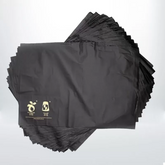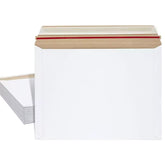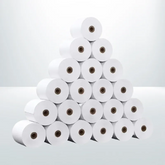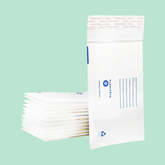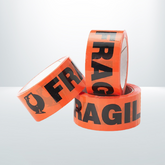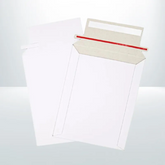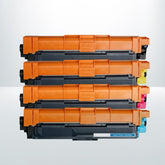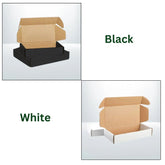Are you tired of struggling with flimsy packaging tape that never seems to hold up? Look no further! In this article, we’ll guide you through the art of choosing the right packing tape.
Discover the different types available, factors to consider, and tips for proper application.
We’ll also discuss the advantages and disadvantages of various tape materials and share best practices for securing and protecting your packages.
Get ready to seal the deal with confidence!
Understanding Different Types of Packing Tape
When choosing the right packing tape, it’s important to understand the different types available to you. There are three main types of packing tape: acrylic, hot melt, and natural rubber.
Acrylic tape is the most common and is suitable for lightweight to medium-weight packages. It provides a strong bond and is resistant to yellowing and aging.
Hot melt tape, on the other hand, is ideal for heavier packages and offers a stronger adhesive. It’s also resistant to temperature changes, making it a good choice for long-distance shipping.
Natural rubber tape is the most durable option, with excellent adhesion and flexibility. It’s perfect for heavy-duty packaging and can withstand extreme temperatures.
Factors to Consider When Choosing Packing Tape
Consider these factors when choosing packing tape.
The first factor to consider is the strength and durability of the tape. You want a tape that will securely hold your packages together, especially if they’re heavy or have sharp edges. Look for tape that’s made from high-quality materials and has a strong adhesive.
The second factor to consider is the width of the tape. A wider tape will provide more surface area for adhesion, making it more secure. However, if you’re packing small items, a narrower tape may be more suitable.
Lastly, consider the ease of use. Look for tape that’s easy to cut and apply, as this will save you time and frustration.

Tips for Proper Application of Packing Tape
To ensure a secure and efficient seal, use enough packing tape to firmly attach the edges of your packages.
Start by placing the tape along one edge of the box, making sure to overlap the tape onto the sides.
Pull the tape tightly to avoid any loose ends that may come undone during transit.
Continue applying the tape along the remaining edges, overlapping each strip of tape slightly to ensure a strong bond.
Pay attention to the corners of the box, as these areas tend to be vulnerable to opening.
Use additional tape or reinforce the corners with extra strips to provide extra security.
Advantages and Disadvantages of Different Tape Materials
When choosing the right packing tape, it’s important to be aware of the advantages and disadvantages of different tape materials.
One popular option is acrylic tape, which offers good adhesion and durability. It can withstand a wide range of temperatures and is resistant to yellowing. However, it may not be the best choice for heavy or rough handling.
Another option is hot melt tape, known for its superior strength and adhesion. It’s ideal for sealing heavy packages and can withstand extreme temperatures. However, it may not be suitable for long-term storage as it tends to lose its adhesion over time.
Lastly, there’s natural rubber tape, which provides excellent adhesion and flexibility. It performs well in extreme temperatures and is resistant to aging. However, it’s often more expensive than other options.
Consider these advantages and disadvantages when choosing the right tape for your packaging needs.
Best Practices for Securing and Protecting Packages
To ensure the secure and protected packaging of your items, it’s essential to follow best practices.
Firstly, choose the right packing tape based on the weight and fragility of your items. For lightweight packages, a standard packing tape will suffice, but for heavy or fragile items, consider using reinforced tape for added strength.
Secondly, properly seal your packages by applying tape along all the seams and edges, ensuring there are no gaps or loose ends. This will prevent the contents from spilling out or getting damaged during transit. Additionally, reinforce the corners and edges of the package with extra layers of tape to provide extra protection.
Lastly, label your packages clearly with the recipient’s address and your return address to ensure they reach their destination safely.
Frequently Asked Questions
Can I Reuse Packing Tape After It Has Been Applied to a Package?
No, you can’t reuse packing tape once it’s been applied to a package. Once the tape is stuck down, it loses its adhesive properties and won’t stick as well if you try to use it again.
Is There a Specific Packing Tape That Is Best for Sealing Heavy or Oversized Packages?
For sealing heavy or oversized packages, there’s a specific packing tape that works best. It offers strong adhesion and durability to ensure your package stays securely sealed throughout its journey.
This type of packing tape is designed to handle the weight and size of larger packages. Its strong adhesion ensures that the tape stays in place, even when subjected to rough handling or extreme conditions. Whether your package is being shipped across the country or internationally, this tape will keep it securely sealed.
In addition to its strength, this packing tape is also durable. It is made from high-quality materials that can withstand the rigors of shipping and handling. This means that your package will remain sealed and protected, regardless of the challenges it may face during transit.
How Long Can Packing Tape Typically Hold up in Different Weather Conditions?
In different weather conditions, packing tape can typically hold up for varying durations. Factors like temperature and moisture affect its adhesive strength.
It’s important to choose a tape suitable for the specific weather conditions you anticipate.
Are There Any Special Precautions I Should Take When Using Packing Tape on Fragile Items?
When using packing tape on fragile items, there are a few special precautions you should take.
First, make sure to use a tape that’s specifically designed for fragile objects.
Additionally, be gentle when applying the tape to avoid damaging the items.
Can I Use Packing Tape to Secure Other Items Besides Packages, Such as Furniture or Artwork?
Yes, you can use packing tape to secure other items like furniture or artwork. It provides a strong hold and helps protect them during transport or storage.
Just make sure to choose the right type of tape for the job.
Conclusion
So there you have it! Choosing the right packing tape is crucial for ensuring your packages are securely sealed and protected.
By understanding the different types of tape available, considering important factors, and following best practices for application, you can seal the deal with confidence.
Remember to weigh the advantages and disadvantages of different tape materials to find the best fit for your needs.
With the right packing tape, your packages will be ready to withstand the journey ahead.
Happy sealing!









